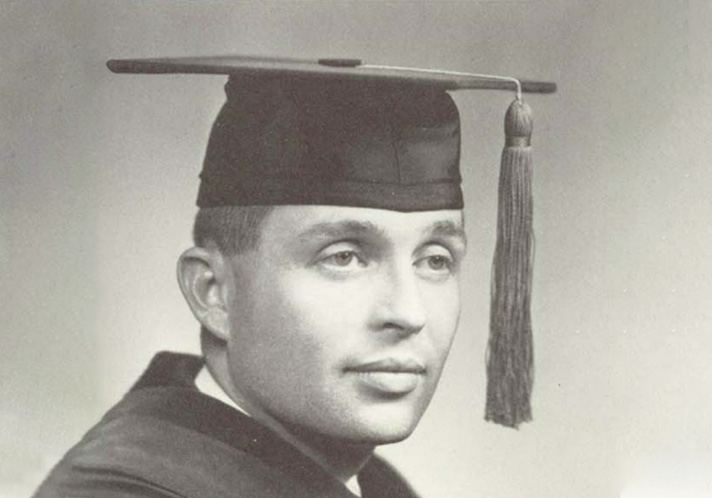Growing up, Robert Lowry and his family received medical care from Donald Evans, D.O., a 1937 graduate of Des Moines Still College, now Des Moines University. Years later, the quality of that care inspired Dr. Lowry to pursue his own osteopathic medical degree at DMU. His mentors in medical school including Byron E. Laycock, D.O., a legendary professor of osteopathic manual medicine.
Dr. Lowry, who graduated in 1961, recently demonstrated his gratitude toward Dr. Evans and the University by using an insurance policy to establish the Robert W. Lowry D.O. and Verna L. Lowry CRNA Endowed Scholarship at DMU.
“I was so impressed by Dr. Evans and Dr. Laycock. I became very eager to follow their osteopathic philosophies,” he says. “I felt like I had an excellent education and wanted to honor that.”
His scholarship also honors service to one’s country by requiring its recipients to serve in the military for four years. Dr. Lowry had joined the U.S. Navy at age 17 and trained at its Hospital Corps School at the Naval Training Center in Bainbridge, MD. His experiences as a Fleet Marine combat corpsman motivated him to become a physician.
“When I came back, I told my wife I wanted to go to medical school,” he says. “She said she would help me any way she could. She ended up paying most of my tuition for medical school.” His application to DMU was supported by a letter of recommendation from Dr. Evans.
Later, as a general medical officer in the U.S. Navy in San Diego, Dr. Lowry had a commanding officer who, aware Dr. Lowry was a doctor of osteopathic medicine, introduced him to William Stryker, M.D., then chair of the orthopedics department at the Naval Hospital. Dr. Stryker invited him to give lectures about osteopathic medicine to his orthopedic residents.
“I jumped at the opportunity to do that,” Dr. Lowry says.
While he sensed the residents and even Dr. Stryker were “rather bored” during his four lectures, that changed when Dr. Stryker asked him to examine some patients in the hospital’s orthopedics ward, all soldiers who had served in the Vietnam War.
“I handpicked five patients I thought I could help with osteopathic manual medicine. At the end of those sessions, four of the five went back to duty the next day,” Dr. Lowry recalls. “The other patient had a really complicated history, so I asked if I could treat him under anesthesiology. After I treated him on two different occasions, he went back to duty the next week.”
So impressed with the young doctor’s treatment, Dr. Stryker invited him to apply for a residency in the orthopedics department. When the Navy’s Bureau of Medicine and Surgery refused to approve his application, Dr. Stryker made a trip to Washington, DC, to protest. Come to find out, the American Medical Association had opposed the residency appointment.
“They did not want D.O.s to be advanced like that,” Dr. Lowry said.
That altered the course of his career. He requested reserve duty and applied for residency at Martin Place Hospital in Detroit. Two years into the residency, he got a call from Joseph E. Prior, D.O., who’d been head of the anesthesiology department at DMU and had gone into practice in Davenport, IA. Eventually, the two – assisted by Dr. Lowry’s wife, Verna, a nurse who went by “Sally” – provided anesthesiology services to the local osteopathic hospital. They soon were asked to do so at two local allopathic hospitals, St. Luke’s and Mercy.
“I was the first D.O. to be a staff member,” Dr. Lowry says. “I ran into my fair share of skeptics.”
That didn’t intimidate him. In 1967, the U.S. Department of Defense started offering commissions to osteopathic physicians; he applied and was accepted as the second D.O. to be commissioned. His colleagues at St. Luke’s and Mercy came round, too, and elected him as the first D.O. to chair their anesthesiology department.
Now retired and living in Palm Coast, FL, Dr. Lowry still has a copy of the osteopathic manual medicine textbook authored by his DMU mentor, Dr. Laycock.
“He was a very big part of my education,” he says. “I’m glad I was in the position to do something for the University in recognition of my indebtedness to the school.”

